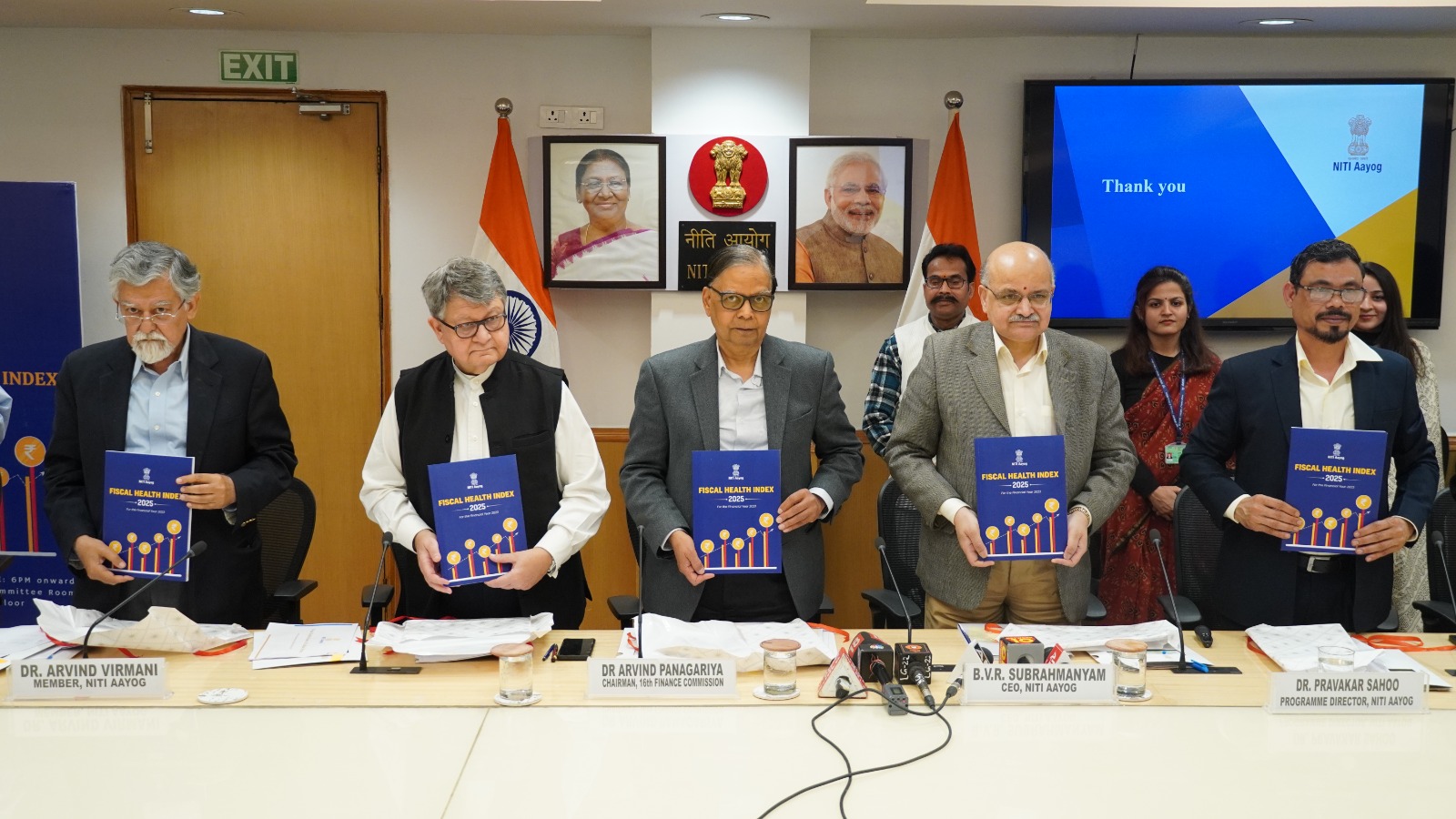Fiscal Health Index (FHI) 2025

- 25 Jan 2025
In News:
NITI Aayog launched the inaugural Fiscal Health Index (FHI) 2025 on 24 January 2025 in the presence of the 16th Finance Commission Chairman, Dr. Arvind Panagariya. The index evaluates the fiscal performance of 18 major Indian states using FY 2022–23 as the base year.
Key Highlights:
- Objective: To assess, monitor, and improve the fiscal health of Indian states and foster balanced regional development, economic resilience, and fiscal transparency. It aims to support the national goal of Viksit Bharat @2047.
- Developed by:
- NITI Aayog, with data sourced from the Comptroller and Auditor General (CAG).
- Designed as an annual publication to promote informed and targeted state-level policy reforms.
- Evaluation Parameters:
The index comprises five sub-indices that collectively offer a holistic picture of fiscal health:
- Quality of Expenditure – Efficiency in developmental and social sector spending (e.g., health, education).
- Revenue Mobilization – Tax and non-tax revenue generation capacity.
- Fiscal Prudence – Adherence to fiscal deficit targets and sound financial management.
- Debt Index – Absolute level of public debt.
- Debt Sustainability – Debt-to-GSDP ratio and interest burden on revenues.
Key Highlights from FHI 2025:
Top Performing States (Achievers):
Rank State FHI Score Strengths
1. Odisha 67.8 Low fiscal deficit, strong debt management, effective capital expenditure
2. Chhattisgarh 55.2 Revenue growth from mining, fiscal prudence
3. Goa 53.6 High tax efficiency and non-tax revenue
Aspirational States (Facing Challenges):
- Punjab, West Bengal, Kerala, Andhra Pradesh
- Issues: High debt-to-GSDP ratios, revenue deficits, poor revenue mobilization
Sub-Index Insights:
- Revenue Mobilization: Odisha, Goa, and Chhattisgarh excelled; Bihar and West Bengal lagged due to low own-tax revenues.
- Quality of Expenditure: Madhya Pradesh and Chhattisgarh prioritized social sectors; Punjab and Rajasthan underperformed in capital investment.
- Debt Management: Maharashtra and Gujarat maintained robust practices; Punjab and Haryana faced rising interest burdens.
- Debt Sustainability: Odisha and Chhattisgarh displayed strong sustainability; West Bengal and Punjab showed fiscal stress.
- Fiscal Prudence: Odisha and Jharkhand maintained low deficits, enabling better public investment.
Significance for Policy & Governance:
- Encourages healthy interstate competition and promotes cooperative federalism.
- Provides data-driven insights for targeted fiscal reforms.
- Reinforces the need for decentralized and transparent financial governance.
- Offers a benchmark for fiscal performance aligned with national transformation goals.
Recommendations:
- Enhance revenue base via tax reforms and tapping into non-tax sources.
- Boost capital expenditure in infrastructure, health, and education.
- Strengthen debt sustainability frameworks and reporting mechanisms.
- Institutionalize fiscal responsibility through better compliance and accountability.
